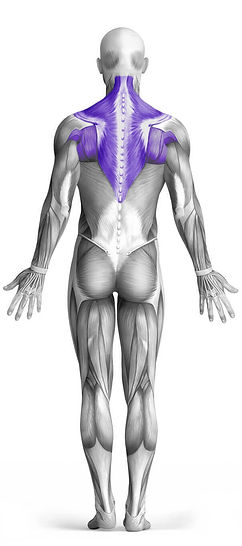Kettlebell Two Arm Row 101 Video Tutorial
0

Exercise Synopsis
Target Muscle Group
Upper Back
Execution
Compound
Force Type
Pull (Bilateral)
Required Equipment
Kettlebell
Fitness Level
Intermediate
Variations
Alternatives
Timer
Hour
Minute
Second
Stopwatch
00:00:00:00
Overview
The Kettlebell Two Arm Row is a compound exercise that primarily targets the upper back, with secondary focus on the lats, traps, and biceps. To perform this movement, you hold a kettlebell in each hand, hinging at the hips while maintaining a flat back. You then pull the kettlebells towards your torso, engaging your upper back muscles and arms as you row. This exercise is excellent for strengthening the back, improving posture, and enhancing grip strength. It requires a kettlebell as the primary piece of equipment and can be adjusted in difficulty based on the weight used.
How to Perform
Start by positioning your feet about hip-width apart, ensuring a stable base. Hold a kettlebell in each hand with a firm grip.
Gently bend your knees and hinge at the hips, maintaining a straight back throughout the movement.
Pull the kettlebells upwards towards your chest while keeping your elbows tucked in close to your body.
At the peak of the movement, pause and actively squeeze your shoulder blades together to fully engage your upper back muscles.
Slowly lower the kettlebells back to the starting position, controlling the descent.
Continue performing the exercise for the recommended number of repetitions, focusing on controlled movement and good posture.
★ Bonus: For exercises that involve external weights (such as dumbbells, barbells, or machines), the One Rep Max (1RM) calculator can help you estimate your maximum lifting capacity. Use it to track your strength progress and adjust your training for optimal results.
Tips
Keep your feet hip-width apart for a stable base.
Hold a kettlebell in each hand with a neutral grip.
Hinge forward at the hips, maintaining a straight back throughout the movement.
Slightly bend your knees to protect your lower back.
Pull the kettlebells toward your torso while keeping elbows close to your body.
Squeeze your shoulder blades together at the top of the movement to fully activate the upper back.
Avoid jerking or swinging the kettlebells; keep the movement controlled.
Lower the kettlebells back down slowly, maintaining good posture.
Engage your core to prevent strain on your lower back.
Focus on squeezing your upper back muscles with each rep for better activation.
How Not to Perform
Avoid Rounding Your Back: Never round your back when hinging forward. This can strain your spine and lead to injury. Keep your back straight and engage your core.
Don’t Swing the Kettlebells: Do not use momentum to pull the kettlebells up. Focus on controlled movements to target the muscles effectively and avoid wasting energy.
Don’t Let Your Elbows Fling Out: Keep your elbows close to your body throughout the exercise. Letting them flare out will reduce the engagement of the upper back and may place unnecessary stress on your shoulders.
Avoid Locking Your Knees: Do not lock your knees when bending. Slightly bend them to maintain a stable base and reduce strain on your lower back.
Don’t Rush Through Reps: Speeding through the movement will lead to poor form and less muscle activation. Perform each repetition slowly and deliberately for maximum engagement of the target muscles.
Avoid Overextending Your Shoulders: Do not pull the kettlebells too far past your torso. Overextending can strain your shoulder joints and reduce the effectiveness of the exercise.
Don’t Let Your Head Drop: Keep your neck in a neutral position with your spine. Dropping your head can cause neck strain and misalignment throughout the exercise.
Avoid Holding Your Breath: Make sure to breathe consistently during the movement. Holding your breath can increase intra-abdominal pressure and negatively affect your form.
Don’t Use Too Much Weight: Using excessively heavy kettlebells can lead to improper form and potential injury. Start with a manageable weight that allows for controlled movement.
Avoid Jerking or Lifting Too Quickly: Jerking the kettlebells up can lead to shoulder strain and waste energy. Focus on smooth, steady movements to maximize muscle engagement.
Variations
Variations of fitness exercises refer to different ways of performing a specific exercise or movement to target various muscle groups, intensities, or goals. These variations aim to challenge the body differently, prevent plateaus, and cater to individuals with varying fitness levels.
Alternatives
Alternative exercises in fitness refer to different movements or activities that target similar muscle groups or serve the same training purpose as the primary exercise. These alternative exercises can be used as substitutes when the original exercise is unavailable or challenging to perform due to various reasons such as equipment limitations, injuries, or personal preferences.








